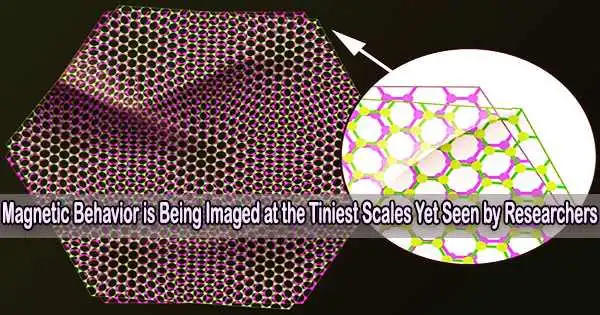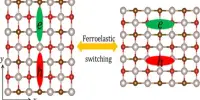Magnetic behavior refers to the response of a material to an external magnetic field. Materials can be classified into three categories based on their magnetic behavior: diamagnetic, paramagnetic, and ferromagnetic.
Permanent magnets, such as those seen in refrigerators, exist because their constituent atoms act as microscopic magnets. In a process known as ferromagnetism, they align and combine to form the larger magnet.
There are several materials in which the atomic magnets create an alternating pattern, resulting in no net magnetism. Such antiferromagnets have piqued the interest of researchers due to their promise for quicker and more compact magnetic memory systems for computing.
Realizing the full potential of antiferromagnetic devices will necessitate monitoring their atom-to-atom magnetic patterns, which has yet to be accomplished. However, researchers at the University of Illinois Urbana-Champaign, led by Pinshane Huang, a professor of materials science & engineering, have made progress toward this goal.
In the journal Ultramicroscopy, they report a new electron microscopy technique that can resolve magnetic behavior on the scale of angstroms tenths of nanometers, nearly on the scale of individual atoms. They use this technique to fully resolve the antiferromagnetic order in iron arsenide for the first time.
“We are working to develop new techniques that can resolve magnetic behavior of individual atoms, and this study is an important step,” Huang said. “The best techniques before now have achieved resolutions of a few nanometers. We have vastly exceeded that record.”
Our work has shown it is possible to resolve small-scale magnetic order in electron microscopy experiments and in simulations, almost at atomic resolution. We are actively developing techniques that will build on this result.
Professor Pinshane Huang
Scanning transmission electron microscopy, or STEM, is a technique used to quantify microscopic magnetism by focusing an electron beam into a material. The beam’s electric interactions with the material’s structure are well-known for providing images of individual atoms in the material, but the beam also interacts with the material’s magnetic structure.
Although this much weaker interaction is sufficient to determine the longer-range magnetic order found in ferromagnets, observing the atom-to-atom variation in antiferromagnets requires a far more precise technique.
“In standard, low-resolution STEM experiments, the magnetic interaction can be understood as a small deflection of the electron beam,” said Kayla Nguyen, a postdoctoral research associate and co-lead author of the study. “On the scale of individual atoms, though, this picture breaks down. The magnetic interactions create complicated and subtle signals in the beam pattern which require new tools to analyze and understand.”
The researchers used a more powerful technology known as four-dimensional STEM to attain higher resolution. Standard STEM techniques record dips in beam intensity as it interacts with the material, whereas 4D-STEM catches full two-dimensional scattering patterns when the electron beam sweeps along the material’s surface (for four-dimensional data) in two directions.
These data allowed the researchers to search the full beam patterns for the more intricate signals of atomic antiferromagnetism.
The researchers created a software tool called Magnstem to simulate the magnetic fields within the iron arsenide sample, which was a critical step in the investigation. Graduate student and co-lead author Jeffrey Huang explained that the package allowed them to add magnetic effects specific to their material and study the effects they had on electron beam patterns.
“Magnstem simulations allowed us to compare the electron patterns with magnetic effects turned on versus turned off, something that would be quite difficult to do in a real experiment,” he said. “We saw that the effects of the magnetic and electric signals occur on different parts of the pattern and can be extracted separately.”
The researchers resolved magnetic order down to 6 angstroms by merging 4D-STEM with Magnstem simulations. While this does not resolve magnetic effects at the atomic level, it did enable them to resolve the antiferromagnetic pattern of iron arsenide, which repeats in cells of 12 atoms.
“Our work has shown it is possible to resolve small-scale magnetic order in electron microscopy experiments and in simulations, almost at atomic resolution,” Pinshane Huang said. “We are actively developing techniques that will build on this result.”
The researchers worked in collaboration with the research groups of Daniel Shoemaker and André Schleife, both professors of materials science & engineering. Shoemaker’s group created iron arsenide samples, while Schleife’s group simulated the material’s magnetic structure.
















